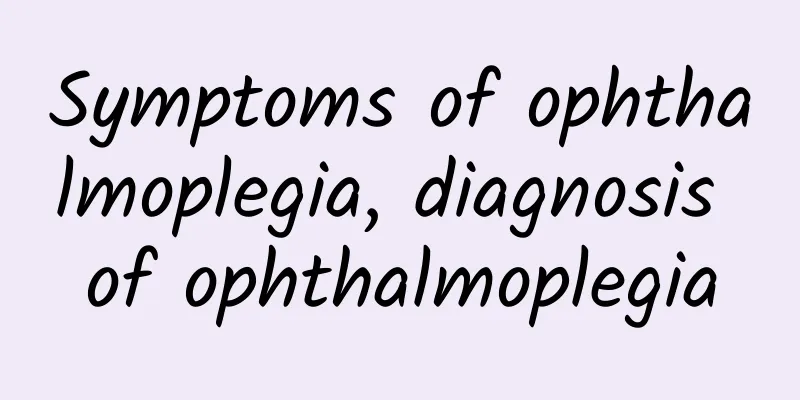Symptoms of ophthalmoplegia, diagnosis of ophthalmoplegia

|
Ophthalmoplegia is a disease that many people are concerned about in daily life. Generally speaking, after people discover that they have ophthalmoplegia, they need to learn more about the symptoms of the disease. Symptoms of ophthalmoplegia: 1. Most cases first present with pain in the back of the eyeball after a local cold. After a few days or weeks, paralysis of the eye muscles on the same side may occur, accompanied by diplopia, and then gradually improve. The above symptoms may recur, with intervals of several months or years. 2. One or both of the III, IV, and VI cranial nerves may be affected. About 20% of patients have pupil involvement and fundus examination generally shows no positive findings, while a few patients have fundus edema. 3. When there is a lesion in the cavernous sinus, the trigeminal nerve branches may be affected, but this is rare. When the lesion involves the orbit, it can cause orbital pseudotumor-like manifestations, and the nerve may also be affected. Facial nerve involvement is extremely rare and is mostly caused by inflammation of the cavernous sinus. 4. Intracranial angiography may sometimes reveal irregular stenosis of the carotid artery and sometimes intraorbital block images. Diagnosis of ophthalmoplegia: 1. Typical painful ophthalmoplegia. 2.Corticosteroid treatment is very effective. 3. There are no systemic symptoms and no lesions other than those affecting the cavernous sinus structure. Toloas-Hunt syndrome is relatively rare in clinical practice and is easily confused with ophthalmoplegic migraine, making clinical diagnosis somewhat difficult. However, most patients with Toloas-Hunt syndrome have a history of local cold on the affected side before the onset of the disease. The pain is mainly located in the back of the eye socket, and the pain is non-fluctuating dull pain with a long duration. The duration of symptom remission is also longer. In addition to affecting the oculomotor nerves, the lesions may also affect the trigeminal nerve. |
<<: There are three methods for treating vocal cord paralysis in traditional Chinese medicine
>>: What are the hazards of cerebral palsy sequelae? These six points need to be paid attention to
Recommend
How long should I fast before general anesthesia surgery?
When we watch TV dramas, we often see that family...
Take this supplement in summer, and you will suffer less in autumn and winter
The spleen and stomach are the foundation of acqu...
It's a bit disgusting. What's going on?
Nausea may occur frequently in our lives, and the...
What are the benefits of eating purple dendrobium?
Dendrobium officinale is a kind of plant medicina...
Coronary artery calcification
Coronary artery calcification is a very common di...
Traditional Chinese medicine treats insomnia, and the effect is good according to the disease
Under the influence of many adverse factors, more...
Pictures of Northern Bean Root
Northern bean root is relatively familiar to ever...
I fell and my wrist hurts when I move it
Everyone has only two pairs of hands, and any wor...
Complete list of drugs for treating prostate
The male prostate is a place that is very prone t...
What causes back sweating?
There are many reasons for sweating on the back, ...
Causes of white madness
Vitiligo is a skin disease that mainly occurs on ...
What to eat for elderly people with irritable bowel syndrome
Irritable bowel syndrome in the elderly is a dise...
Aflatoxin poisoning
Many people may not know what aflatoxin is. Aflat...
Is suppurative otitis media serious?
Suppurative otitis media is actually a kind of mo...
What are the signs of sudden death after drinking?
There are many cases of sudden death after drinki...









